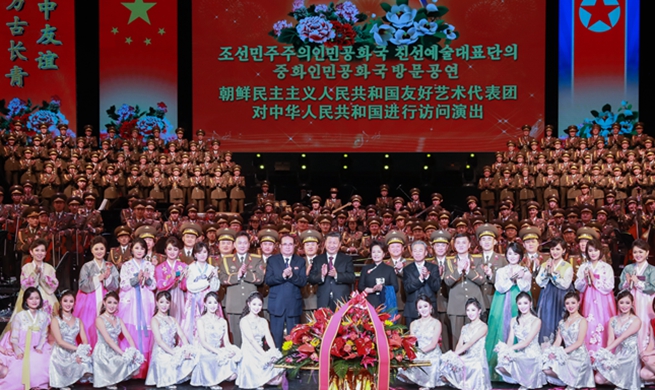CHICAGO, Jan. 29 (Xinhua) -- Students' comprehension of words in a foreign language improves if teachers pair each word with a gesture, even if the gesture is arbitrary and does not represent a word's actual meaning, showed research released by the University of Illinois (UI) on Tuesday.
The 30 participants in the study were all native speakers of American English or considered it to be their first language. While about one-third of the participants considered themselves bilingual, none had any experience with Mandarin or any other Chinese language.
Students watched as the instructor introduced 18 new words in Mandarin, presenting them to the students in groups of six: six words each accompanied by arbitrary gestures, iconic gestures and without gestures.
Instructors and students repeated both the Chinese word and its English translation twice. However, the students only watched and did not replicate any hand gestures that the instructor used with the words.
After two instructional sessions, the students took a multiple-choice test, with the instructor presenting the words and associated gestures in random order and the students choosing the English translation of each word from a list of four words.
When the vocabulary words were presented with iconic or random gestures, students' ability to recall the words' meanings was 8-10 percent better than with words that were presented without gestures, the researchers found.
"A 10-percent improvement isn't huge, but it could boost a student's score on a test by one grade level," said UI educational psychology professor Kiel Christianson, one of the co-authors of the study. "We also found that gestures do not need to be obviously iconic to facilitate learning. Instructors can use any unique hand movement that students do not associate with another word."
This finding is important for pedagogical reasons, Christianson said, because many words cannot be easily represented with gestures. However, the study suggests that foreign language instructors can pair a new word with any type of unique gesture and facilitate learning.
Christianson and his co-authors hypothesized that simply watching the instructor move their hands while presenting a word enabled students to create a kinetic image of that word in their mind.
When new words were paired with the arbitrary gestures that were not representational of a word's meaning, students may have generated idiosyncratic ad hoc iconic associations between the gestures and the words in their memory, the researchers said.
"Visualizing a gesture with each word creates multiple pathways into the semantics of new words and helps students remember them better," Christianson said.
However, the gestural advantage in learning declined when students were introduced to more than about 10-12 words at a time, the researchers found.

















